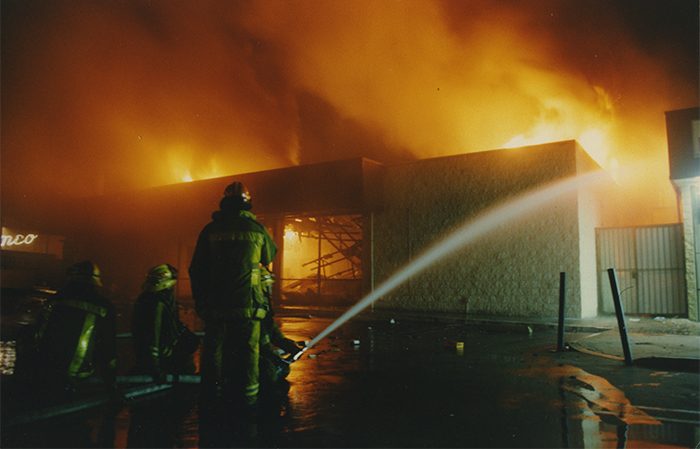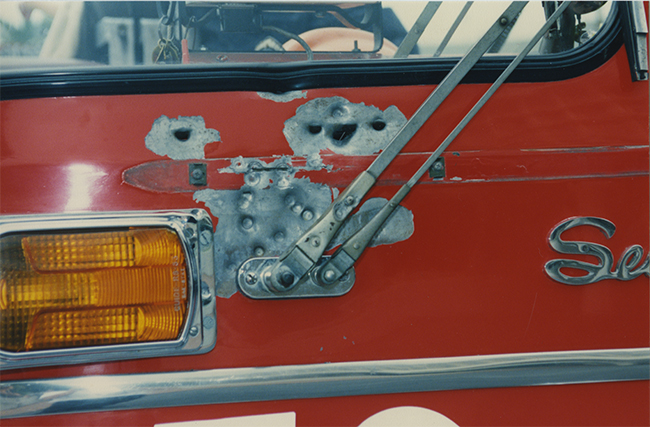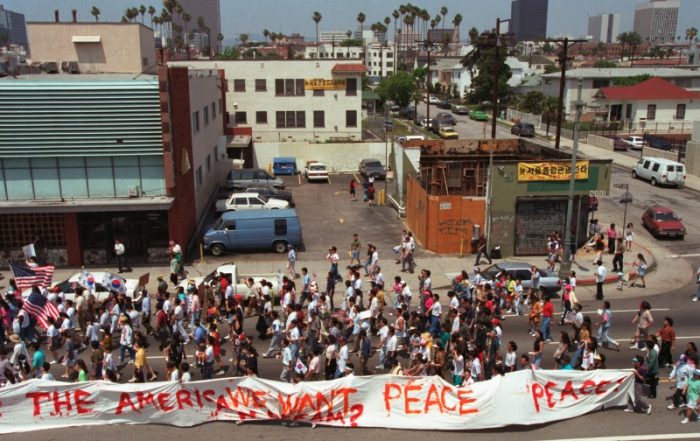
“The Lost Tapes: LA Riots” showed all the important events leading up to the 1992 uprising, from the protests for the firing of then chief Daryl Gates, to the shooting of Latasha Harlins.
The documentary begins in 1980, when former police chief Daryl Gates was getting questioned about police officers’ use of excessive force. Gates grew defensive and alleged that the media falsely reported that officer-involved shootings were increasing at the time.
A turning point came with the Rodney King beating; chief Gates announced that the LAPD would create a plan to avoid brutal incidents. Many community members demanded him to resign, but Gates refused.
Footage of news broadcasts, testimonies at City Council & Community Meetings, and speeches from local political figures display the mounting tension. The footage also shows multiple perspectives involved in the rise of racial friction by showing internal LAPD tapes of Gates and footage of the police and civilian stand off in South Central Los Angeles.
The footage chosen shows the emotion of the time, as viewers see Rev. Cecil Murray of the First AME Church shed a tear, as the Rodney King verdict was being announced.

“Depravity and insanity always stun you,” Murray said. “You just think that rational beings would at least be semi-rational, civil people would at least be semi-civil,” he said.
Along with the poignant footage and gripping images of the uprising, are sounds: police dispatch recordings, police sirens, civilians yelling to video record harsh police incidents, and the KJLH broadcast of Eric “Rico” Reed, on that late April afternoon when the rebellion started.

The Smithsonian channel used the archival sounds to weave in the parallels between the 1960 Watts Rebellion with the L.A. Uprising. The documentary also breaks down the events after the Rodney King verdict by the hour, showing the time, beginning when Gates holds a press conference about the unrest, to the time when former Mayor Tom Bradley declared a State of Emergency in South L.A.
Maps showed the locations in Los Angeles of violent unrest, looting, and fires.
The documentary also shows never seen footage shot by camera crews from the LAPD, showing people extinguishing fires, police officers arresting looters and buildings burning.
Translated phone conversations, show the impact the L.A. Uprising had on Korean-owned businesses. Recordings of business owners learning their stores were burned down were matched with photos and videos of burning storefronts.
Images and videos of violent beatings were beside interviews of people calmly explaining unfair practices of the justice system, and photos of fires matched images of crying people.
Emotional phone calls to KJLH resounded while the L.A. Uprising played out, as the community expressing their frustration with the police and with looters destroying stores.
The documentary gets a holistic view on how citizens of Los Angeles experienced the Uprising. Images showed the destruction and pain, as sound recordings brought humanity to people who lived and worked in South Central Los Angeles.
“The Lost Tapes: LA Riots” did not leave out the voices of central figures, as community members, representatives of the justice system, South Central business owners, and Los Angeles Councilmembers were all represented. The episode showed how relevant the story of the LA Uprising is in modern times.
To watch “The Lost Tapes: LA Riots,” please visit the Smithsonian Channel website.







